
© respectively ROH, ROH, Kiran West.
Interviews with Alexander Whitley, Paolo Mangiola and Robert Binet about their new pieces commissioned by Wayne McGregor | Random Dance and the Royal Opera House…
alexanderwhitley.com
www.paolomangiola.com
www.robertbinet.net
See the three choreographers works at the Royal Opera House, Linbury Studio, on 22 and 23 November at 7.45pm, and 24 November at 2.30pm and 7.45pm. Bill details
www.randomdance.org
www.roh.org.uk
It’s now 20 years since Random Dance was founded by Wayne McGregor, and for lovers of the company’s innovative corporeal aesthetic, its never been easier to see their highly influential style. By any standard this has been a busy year for the company’s artistic director – in the last six months alone, there’s been the Big Dance 2012 mass performance in Trafalgar Square, danced by 2,000 amateur performers, new work Carbon Life and a revival of Infra for the Royal Ballet where McGregor is Resident Choreographer, a tour of 2010’s FAR and an installation in the Barbican’s Rain Room for Random, and this week a triple bill at the Linbury Studio celebrating the company’s 20th anniversary and McGregor’s own first Linbury programme in 2002. It’s a significant event – instead of celebrating with his own work he, and the Royal Opera House, are putting on new works by emerging choreographers, investing in them in the same way as he was invested in by others all those years ago.
McGregor has invited three young artists from very different backgrounds to work with both Random and dancers from the Royal Ballet. Alex Whitley trained at the Royal Ballet School and danced with Birmingham Royal Ballet before joining Rambert in 2004. “Once I’d gone to Birmingham I took an active interest in making my own work and looking at choreographers that were emerging at the time – people like Wayne McGregor, Akram Khan and Russell Maliphant who were making work that was really exciting to me and seemed to be challenging certain conventions,” says Whitley. “I soon realised that if I wanted to pursue that line of thinking through my own choreography and learn more about dance then I’d have to move to a company where I’d be exposed to those kinds of ideas and be able to learn more about them.”

© and by kind permission of the Royal Opera House.
At Rambert Whitley worked with a wide range of artists including Rafael Bonachela, Christopher Bruce, Siobhan Davies and Mark Baldwin; he also created his own works for the company’s annual Season of New Choreography between 2005 and 2009. “Rambert was a great place to learn a lot about how to dance differently and at the same time understand more about what the ideas were behind the different dance styles and techniques,” says Whitley . “It’s that that’s really excited and interested me about dance, especially in my own work: learning what dance is and how it can be thought of and considered and communicate with audiences.” And, looking to absorb more of the new, he joined Random Dance in 2010 and is also now a Royal Ballet Affiliate Choreographer and a New Wave Associate at Sadler’s Wells.
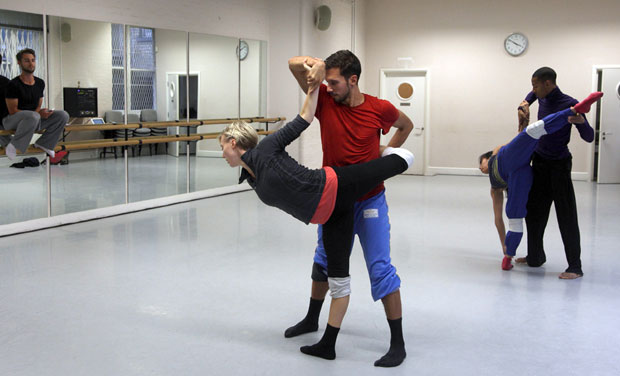
© Ravi Deepres, by kind permission of the Royal Opera House. (Click image for larger version)
Whitley has created Hertz, a piece for 8 Random dancers inspired by the properties of light. “I looked at scientific theories and principles like frequency and oscillation that could be applied to the making of movement, but I was also using a qualitative framework by an American philosopher called Maxine Sheets-Johnson,” explains Whitley. “For example, taking the principle of oscillation from waveform theory, the oscillation between an expanded and contracted bodily state, we tried to apply that to a particular qualitative aspect of movement.”
Unlike the other two choreographers in the programme, Whitley is working with his own Random colleagues for this piece. “I know my colleagues well and have a pretty good relationship with them, and we had a common departure point through working with Wayne, so starting the dialogue was easier than it might have been with people I haven’t worked with before. The challenge is switching between the role of being a colleague and being a choreographer and director of the work – it’s not always an easy boundary to navigate,” says Whitley, who nevertheless enjoyed the process of working with people he usually shares a stage with.
Italian-born Paolo Mangiola joined Random in 2008. “I started choreographing in 2001 when I’d just finished school – alongside my performing my career I always did choreography and I always tried to find my own identity, “ he says. “ I’m kind of between ballet and contemporary dance – I like both languages and I think it’s very interesting that we can mix them together.”
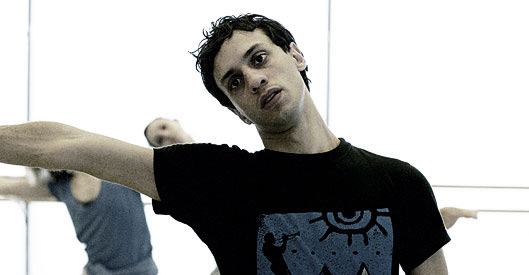
© and by kind permission of the Royal Opera House.
For the anniversary triple bill, Mangiola has made Alpha Episodes on three male dancers from the Royal Ballet. “Wayne suggested that I work with them; I felt really excited but I was also really scared as well”! he laughs. Alpha Episodes investigates the changing definition of masculinity over time. “I thought it would be beautiful to explore the idea of the alpha male and how masculinity has changed through the centuries and the years,” says Mangiola, “and I thought it would be really good to explore that with three amazing dancers from an institution like the Royal Ballet which has this great kind of tradition.”
Mangiola created the piece with Royal Ballet principal Edward Watson and soloists Eric Underwood and Paul Kay. “I chose the dancers because each of them is extremely different with different qualities,” he explains. “So then in the studio I wanted to explore the specificity of these qualities – Edward has this amazing facility with the body and yet this beautiful adagio quality, so I thought how can I use that and translate it into the piece? And I did that also with Eric and Paul.” Alpha Episodes is structured as three solos and a trio for the men, and set to music Swedish composer, Dag Rosenqvist, and text by Virginia Woolf.
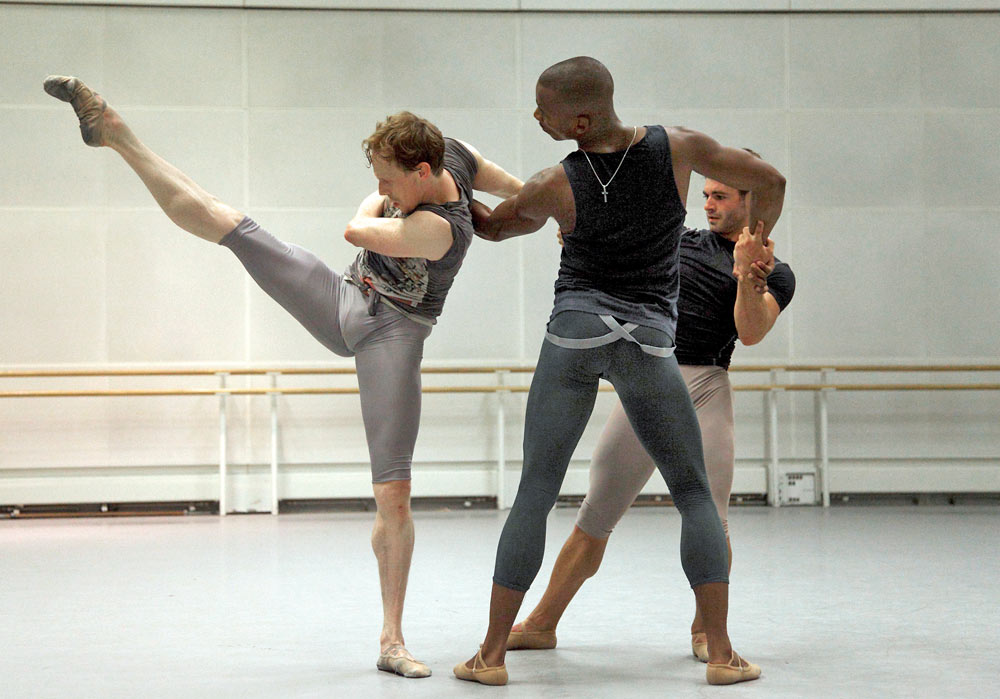
© Ravi Deepres, by kind permission of the Royal Opera House. (Click image for larger version)
With the dancers on busy rehearsal schedules Mangiola knew he wouldn’t have as much time as usual to prepare the piece. “I knew that I didn’t have the luxury of time, so I worked a lot behind the scenes; I did a lot of homework and I came prepared to the studio.” Mangiola was keen to collaborate as much as possible with the dancers on improvisational tasks structured around the idea of masculinity. “Because they are amazing dancers they came back to me with even more suggestions,” he says. “We explored how the language of ballet can be charged with pedestrian gestures. So I provoked the dancers and they came out with this new language which is a mix of balletic dance and something very precise, very concrete.”
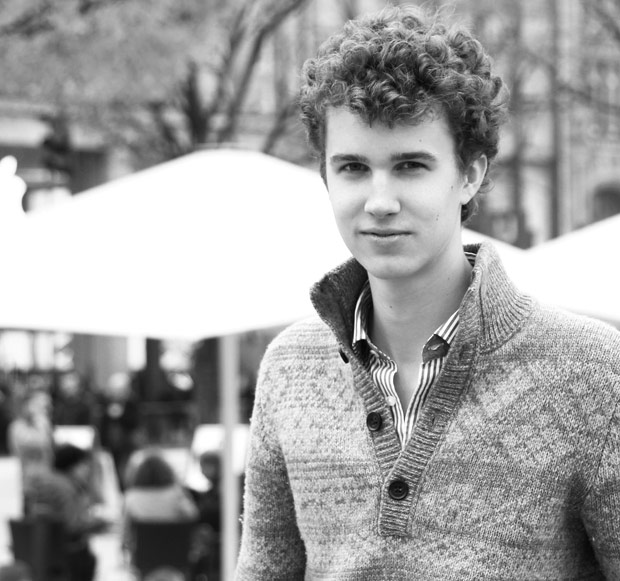
© Kiran West, by kind permission of the Royal Opera House.
Royal Ballet Choreographic Apprentice, Robert Binet, trained at the National Ballet School, Canada and came to London in 2011 to participate in the Royal Opera House’s DanceLines choreographic project. His piece for eight of Random’s dancers, Life’s Witness, looks at states of being and non-being. “I was thinking about various incomplete states or states of absence,” says Binet, “such as deep sleep where you’re so at the mercy of your subconscious, or overwhelming rumination where you’re not fully present, and how these states have a huge impact on our lives and our relationships, but also how our relationships have an impact on our decisions to enter these states of absence or states of presence.”
Since his own ballet training Binet has created work for companies including the National Ballet of Canada, the Estonian National Ballet and the Royal Ballet in London; working with the Random dancers was a new and inspiring experience. “The Random dancers are absolutely brilliant, the way they handle any challenge you give to them,” says Binet. “It was really a collaborative process – you can give them such a complex task or puzzle that you design to generate the material you want, and they’ll give you something you can transform into what your vision is, something that’s going to say what you want to say most effectively.”
Binet has chosen to work with live music for his piece, partly in order to unite the compositions he has chosen by four different composers into one score. The music will be performed onstage by a quartet from the Southbank Sinfonia. “Working with live music is always more variable,” says Binet, “but when it works it’s always so much more exciting because everything that’s contributing to the performance is happening in real time; it’s being created live on stage which can be that much more of an exciting experience.”

© Ravi Deepres, by kind permission of the Royal Opera House. (Click image for larger version)
In addition to celebrating Random’s 20th anniversary, and the ten years since McGregor first collaborated with the Royal Ballet on the Linbury Stage, this triple bill marks the Royal Opera House’s ongoing commitment to talent development and supporting dance artists at all career stages. “The ROH is really an incredible organisation, to take a chance on someone of my age and my level of experience and give them an opportunity like this,” says Binet. “They’re so supportive of me, and it’s not just me, there’s so many choreographers, young and experienced choreographers that they involve at all levels of the organisation.”
Alex Whitley agrees: “It’s an amazing opportunity to have that support and fantastic resources to develop my work to really see me through the transition of my career as a performer to my career as a choreographer“. Whitley’s residency at the Opera House will culminate in an evening of work presented at the Linbury in April 2014, which will include performances by the Royal Ballet and by Whitley’s own company of dancers. Mangiola is also planning to move into full-time choreographic work from February next year, with work in London and Milan.
With this forward-looking celebratory triple bill, Random Dance is nurturing the next generation of choreographic talent. Catch Random and the Royal Ballet in action this week at the Royal Opera House Linbury Studio on 22 and 23 November at 7.45pm, and 24 November at 2.30pm and 7.45pm. (more details)









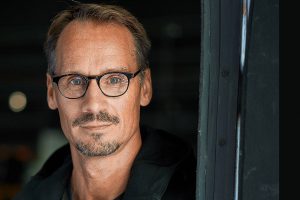
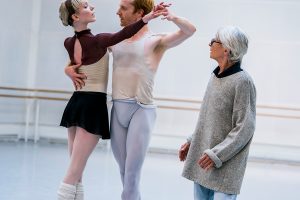




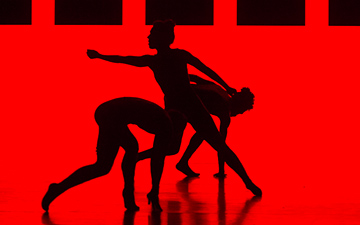
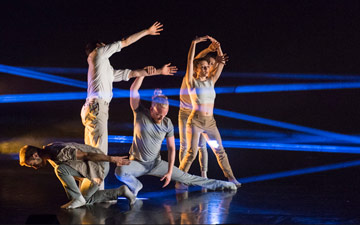
You must be logged in to post a comment.